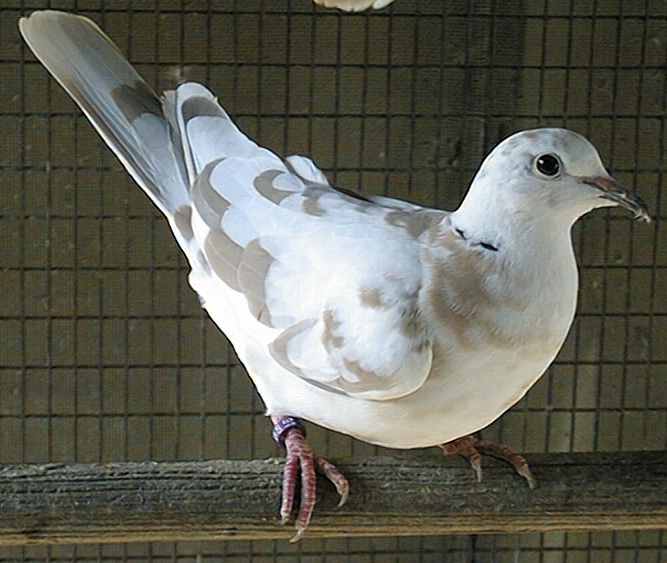
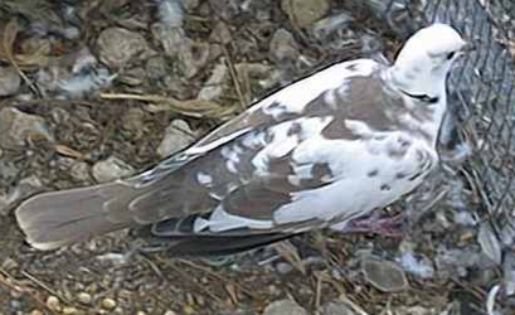
ŠJohn Pire
Fawn Pied - Original male 1st Wild Type male young
Pattern Pied
John Fowler produced a "marked pied" & used the term Pattern Pied to describe his birds. In talking with John about this mutant it was decided that the term "PATTERN PIED" would be a more appropriate descriptive term for this mutant. Further research of this gene is being done.
The Pattern Pied is not limited to any one "pattern". All birds within the single lineage should be similar marked & all offspring should also be the same "pattern" that the fancier has bred for - with as little deviation from that "pattern" as possible.
I became interested in the "marked pied" mutant when I first saw the pictures from Hein van Grouw in Europe. Not a lot of information was ever provided & what is known is reproduced in the booklet Ringneck Colors by Prof. Lockhart. I received the book Hein had written & published (1 copy in Dutch & 1 copy translated into English)(read Hein's info). No new data was obtained for this mutation then what I already had found.
I started a breeding experiment to see if the "marked pied" could be reproduced here in the US. Below you will find the results of two years of experimentation. Since no two pied or "marked pied" are marked exactly alike - the birds seen in these pictures can be considered "Pattern Pied" (marked pieds).
I started the test group with an unknown Fawn Pied male. He was mated to a Wild Type hen which carried the "pied" gene hidden. Their only offspring was a Wild Type Pied male. This male pied was mated to a Wild Type hen with no known hidden genes. I produced 4 young, I kept two Wild Type youngsters, a male & female. The two other young were blond. I did not want that color so disposed of them.


ŠJohn Pire
Fawn Pied - Original
male
1st Wild Type male young
I paired the two Wild Type young together & they produced several young. Both young were pied & marked alike. The oldest pied was a hen & the 2nd youngster died at fledging.
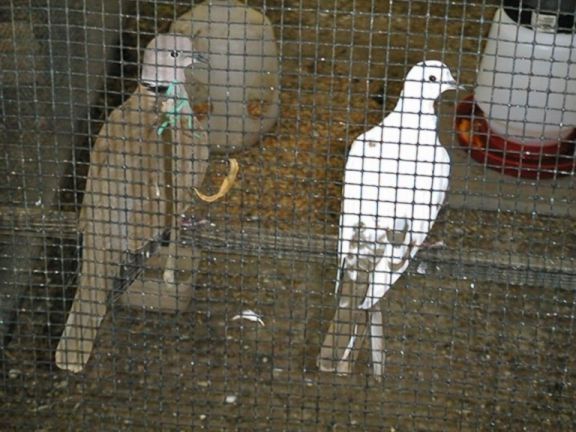
ŠJohn Pire
WT male which carries the "pattern pied" gene & visual
"pattern pied" hen
This "pied" hen was paired with her father & the resulting young (pictured below), which are visual pied are all similar in markings. The pair has produced a couple of Wild Type young, but I have yet to test them for the visual pied gene I want. That is a future test group.
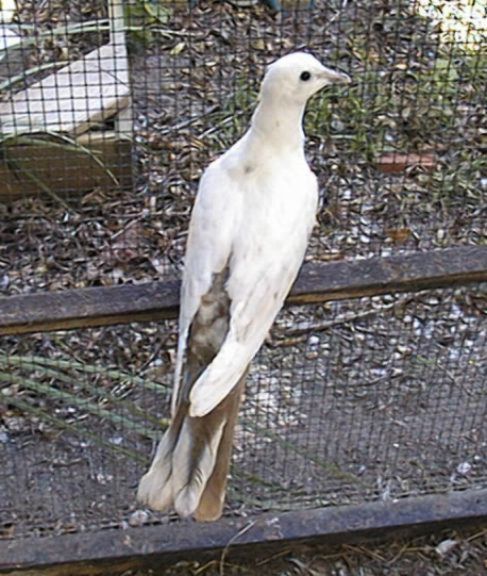
ŠJohn Pire

ŠJohn Pire
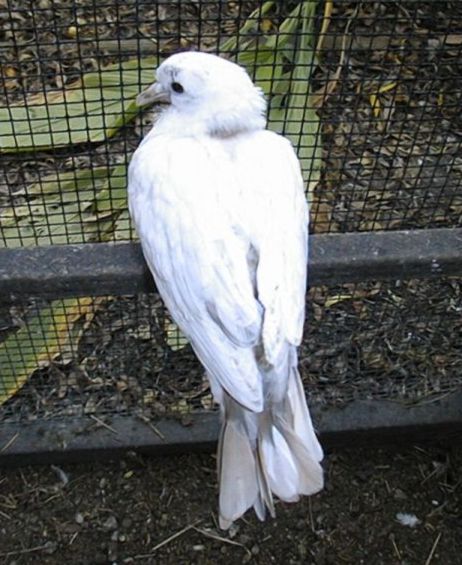
ŠJohn Pire
this youngster does not have a colored neck ring - you are seeing skin which
is visible
The 3 young in the above pictures are all marked or have a similar "pattern" alike - thus I consider them "pattern pied". There is no rule that says the "pattern pied" has to look similar to the European or French mutant; just that the marking are similar on each of the birds.
In conclusion - if you want to produce your own line of Pattern Pied - begin with a visual "pied pattern" that you want to reproduce. Pair the pied to a solid colored bird that does not carry pied or any other hidden genes. The offspring - either sex will receive the "pied" gene from the visual pied parent. The visual pied can be paired with the opposite sex youngster & the resulting young will produce 1/2 visual pied young. Be selective with the "visual pied young" to select the "pattern" you most want to reproduce. Any solid colored young will have to be tested for the possible "pattern pied gene" you are trying to reproduce